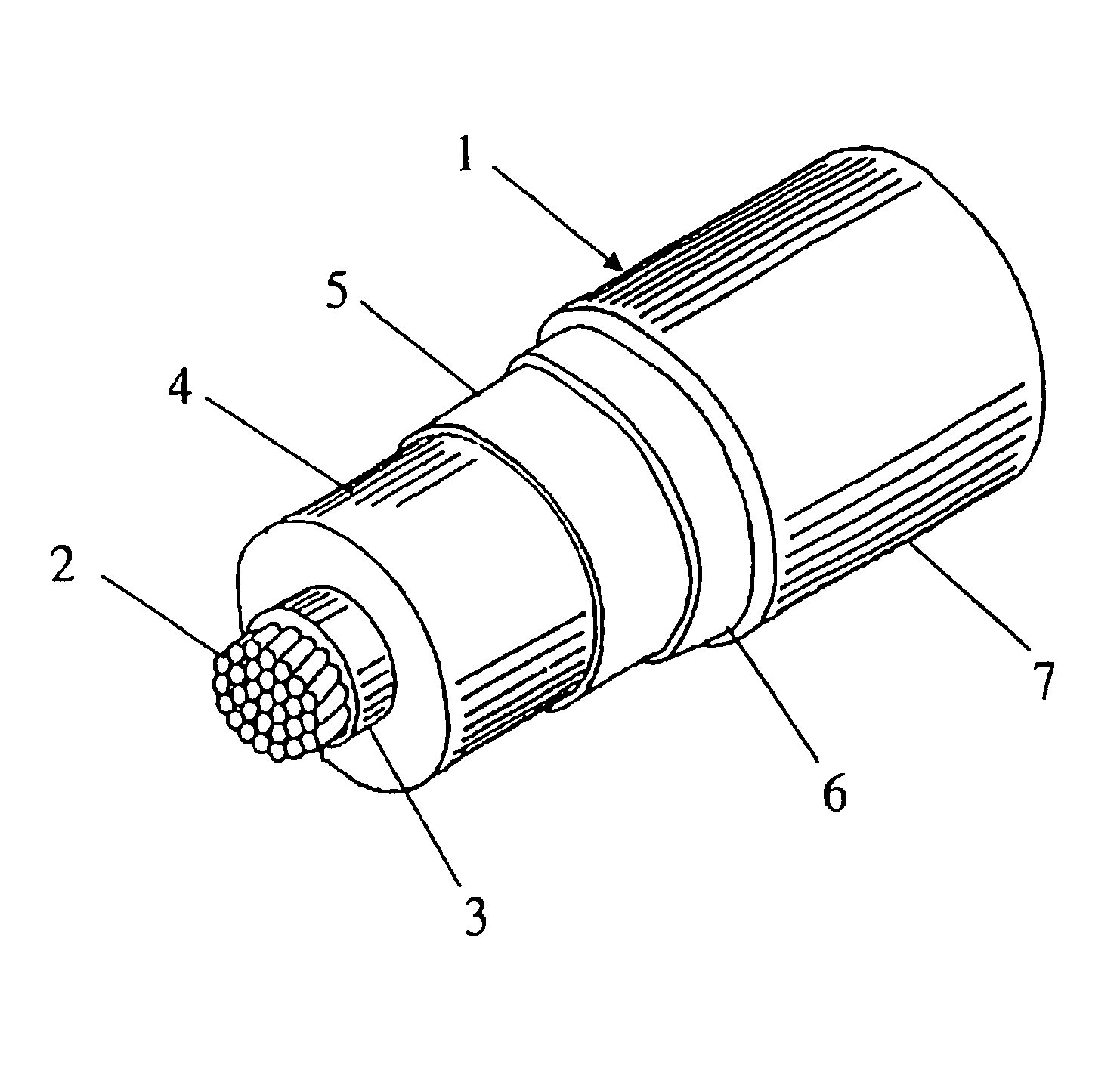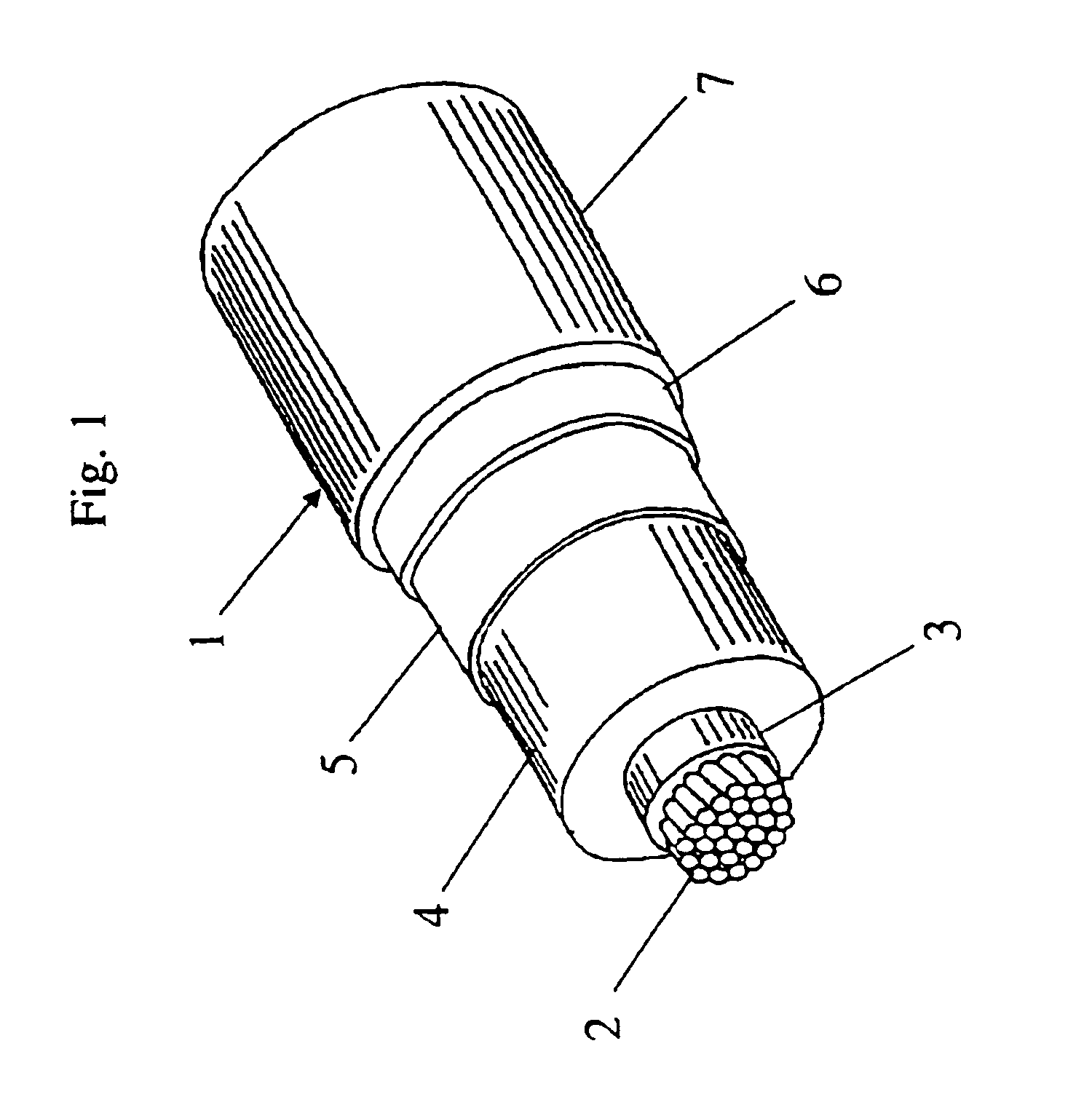Electrical cable, particularly for high voltage direct current transmission or distribution
a technology of electrical cables and cable bodies, which is applied in the direction of plastic/resin/waxes insulators, yarns, plastic/resin/waxes, etc., can solve the problems of affecting the operation of the cable, so as to promote and reduce the accumulation of space charges
- Summary
- Abstract
- Description
- Claims
- Application Information
AI Technical Summary
Benefits of technology
Problems solved by technology
Method used
Image
Examples
example 1
[0075]99.82 g of low density polyethylene (LDPE LE 4201 S from Borealis, containing 2.1% by weight of dicumyl peroxide) and 0.18 g of acrylic acid (Fluka) were introduced into a 200 ml round-bottomed flask with stirring.
[0076]The temperature was then raised to 50° C. and the mixture was maintained at this temperature, with stirring, for three hours until the acrylic acid was completely absorbed.
[0077]By working as described above, the following mixtures were prepared:[0078]99.64 g of low density polyethylene (LDPE LE 4201 S from Borealis, containing 2.1% by weight of dicumyl peroxide) and 0.36 g of acrylic acid (Fluka);[0079]99.50 g of low density polyethylene (LDPE LE 4201 S from Borealis, containing 2.1% by weight of dicumyl peroxide) and 0.50 g of acrylic acid (Fluka).
[0080]Films were prepared from the mixtures thus obtained, by press-moulding at 130° C. followed by cross-linking at 180° C.
[0081]The moulding conditions were as follows:[0082]dimensions of the mould: 20×20 cm;[0083...
example 2
[0097]A high voltage cable prototype was produced, in which the insulating coating layer consisted of a polymeric composition according to the present invention.
[0098]The cable was prepared by co-extrusion of the three layers, using a three-head extruder, i.e. three separate extruders opening into a single extrusion head, so as to obtain the co-extrusion of the semiconductor coatings and of the insulating coating.
[0099]Thus, an aluminium conductor (consisting of a plurality of aluminium wires stranded together to form a cross section of about 70 mm2), was coated on the extrusion line with an inner semiconducting coating 0.5 mm thick comprising ethylene / butyl acrylate and carbon black.
[0100]A 45 mm single-screw Bandera extruder, of configuration 20D, provided with four zones of heat regulation by using diathermic oil, was used to deposit said inner semiconducting coating. Over said inner semiconducting coating was extruded an insulating coating 5.5 mm thick comprising low density pol...
PUM
| Property | Measurement | Unit |
|---|---|---|
| density | aaaaa | aaaaa |
| density | aaaaa | aaaaa |
| density | aaaaa | aaaaa |
Abstract
Description
Claims
Application Information
 Login to View More
Login to View More - R&D
- Intellectual Property
- Life Sciences
- Materials
- Tech Scout
- Unparalleled Data Quality
- Higher Quality Content
- 60% Fewer Hallucinations
Browse by: Latest US Patents, China's latest patents, Technical Efficacy Thesaurus, Application Domain, Technology Topic, Popular Technical Reports.
© 2025 PatSnap. All rights reserved.Legal|Privacy policy|Modern Slavery Act Transparency Statement|Sitemap|About US| Contact US: help@patsnap.com



